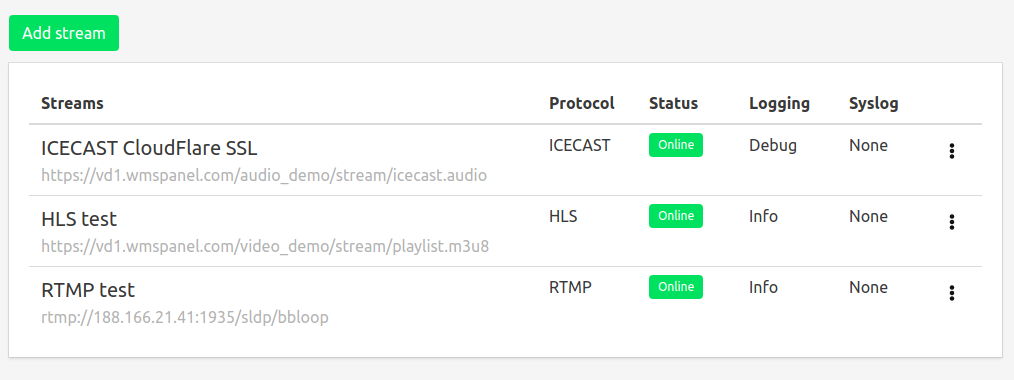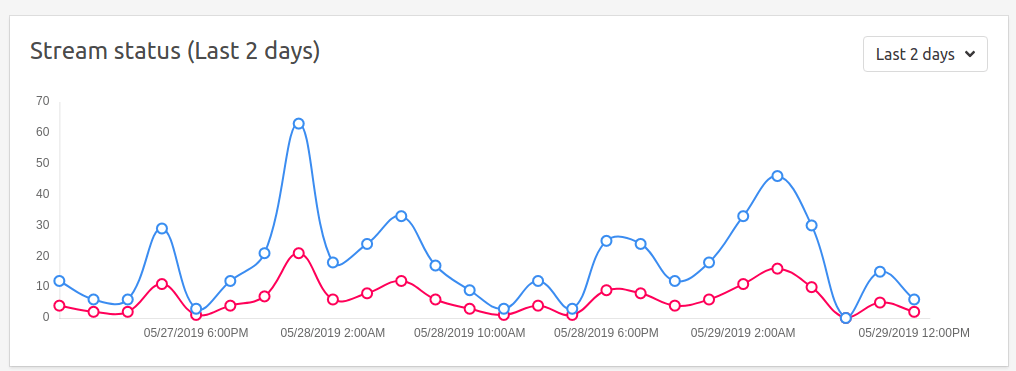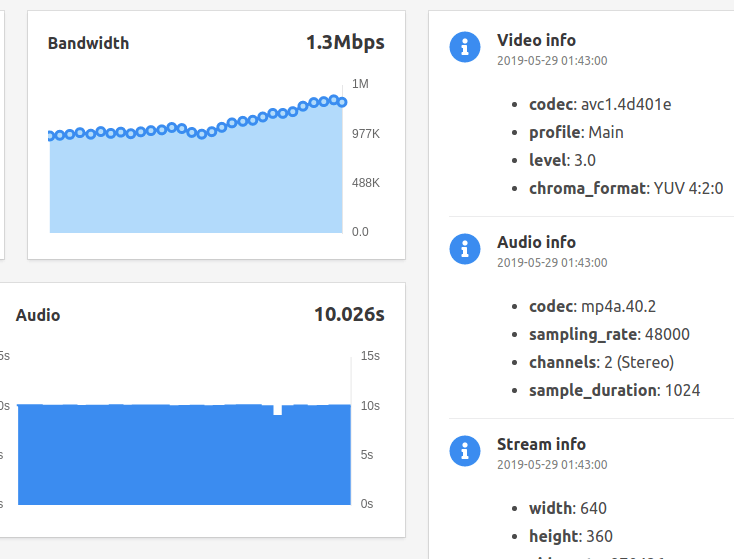Monitoring RTMP stream
RTMP is a leading standard for live stream delivery from encoders and origin servers. Qosifire allows monitoring the quality of service for RTMP streams to make sure the content is produced properly for further usage. Also, RTMP can still be used for playback so Qosifire will monitor the performance from end-user perspective.
Learn more abouthow Qosifire can help your use cases.
A customer installs monitoring agent on any server in appropriate location, then sets up monitoring settings using Qosifire web console, please check installation section in our knowledge base. Also checkGetting started guide to see how you can initiate Qosifire usage in a few easy steps.
In Qosifire, a stream is a basic unit which defines specific live stream to monitor and its check-over parameters.
Notice To learn more about stream setup, readManaging streams article in our knowledge base. Current article describes how HLS steams are monitored and what stream characteristics you may check with Qosifire.
Viewing streams stats
To view monitored streams, log into Qosifire and click on Streams menu in the navigation panel.

Each stream has its name and URL, current status and logging settings.
The statuses can be one of the following
- Idle means the streams was added but not yet synced up with agent node.
- Syncing means the stream are being synced at this moment, it normally takes several seconds.
- Online means that the stream is being checked and it's working with no errors.
- Offline means the stream is not received.
Clicking on the stream name will open its status page.
Stream status chart
First, you'll see Stream status chart, showing number of events - both successful events and errors. It's a basic overview to get a picture of what was going on with the stream.

Stream events feed
This is a panel on the right side of the page which shows events received from the agents regarding this stream, in the reverse order of reception. Some of the events initiate sending a notification to proper subset of users, we'll mention them specifically. The following events are displayed.
General events:
- Task started - the agent started the task of continuous check-over.
- Task finished - the agent finished check-over, e.g. a node was unassigned from this stream.
DNS-related and network events:
- Hostname resolved for the stream URL.
- Failed to resolve host for the URL. This event generates user notification.
- Redirect to other URL.
- Connected to host means the agent has connected successfully to stream.
- Failed to connect in case connection to the stream has failed. This event generates user notification.
RTMP-specific events:
- Stream info shows general information for the stream, e.g. its resolution.
- Video info has information regarding video content like codec, profile etc.
- Audio info has information regarding audio content like sample rate, channels etc.
- Buffer too short means that the buffer sent by the server is too short for proper playback and check. This event generates user notification.Read this article for more details.
- Buffer too long means that the buffer sent by the server is too long for the player. This event generates user notification.
- Error is a general-purpose event which generates user notification and contains RTMP protocol-specific issues. There are dozens of possible use cases and they all are handled and reported by Qosifire.
Most of events have Details button which allows you to see more information about what's happened at that point of time.

Traffic
Traffic chart shows how much data was received from the stream each second.
Bandwidth
Bandwidth chart shows an average transmission speed of a stream.
Buffers charts
Another couple of chars show buffer size available on agent for video and audio.
Watch this video showing full RTMP setup procedure.
Using teams for access control
The stream's details can be viewed by:
- All admin users.
- Non-admin users who are assigned to a team which has access to current stream.
To learn more about using teams for access control, please refer toUsing teams article.
Receiving notifications
As mentioned above, some of the events initiate sending notifications to the users who were eligible for receiving the messagesas described in this article. The web console will use the user account email to send them. If the user has installed our app on a mobile device and has registered in the system, then this user will also get a push notification.
How to stop monitoring a stream
Point to stream in streams' list, you will see icons on the right - Pause, Edit and Delete. So just click on Pause, this will un-assign all nodes from the stream and initiate "Task finished" event. You won't get any notifications going forward. If you'd like to resume, click on Play, this will assign a stream back.